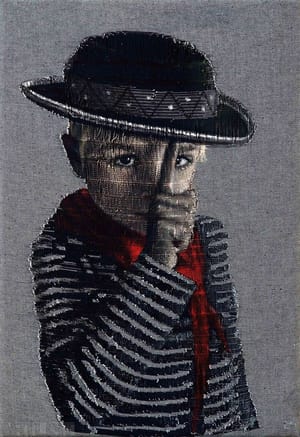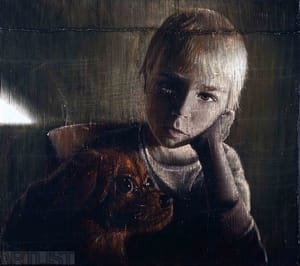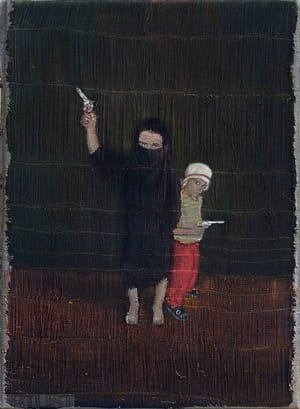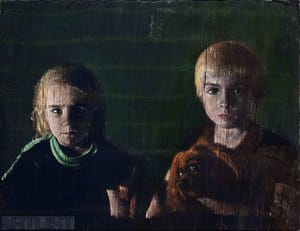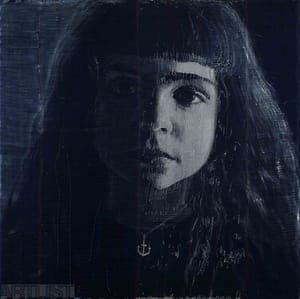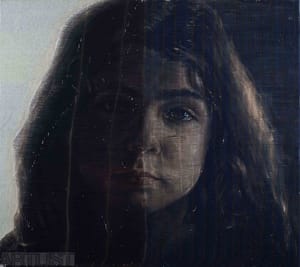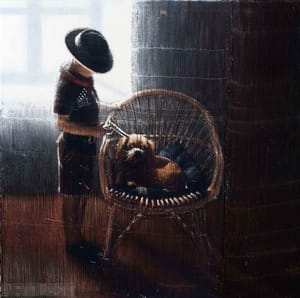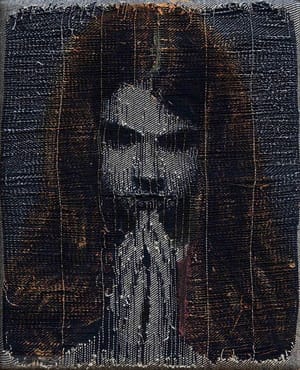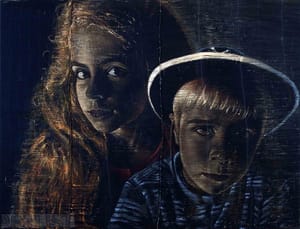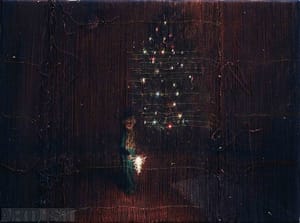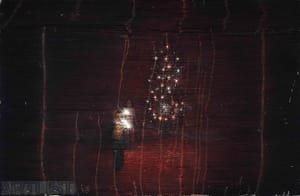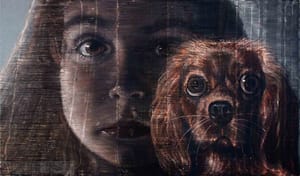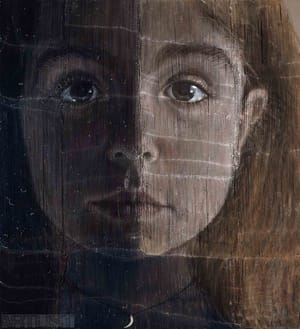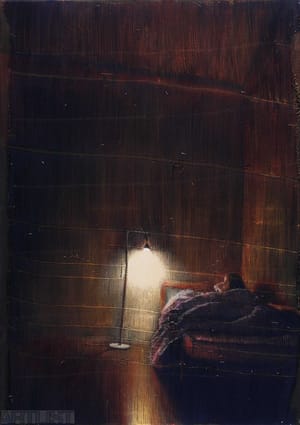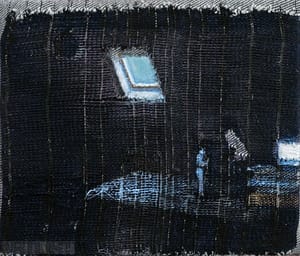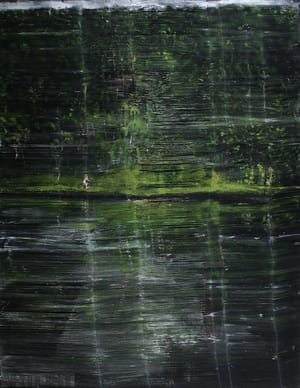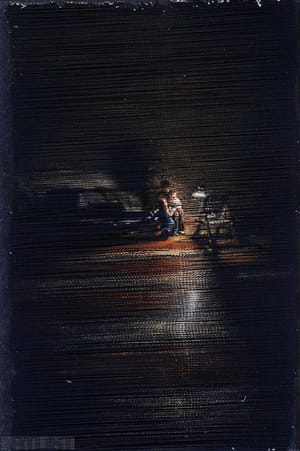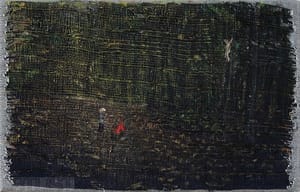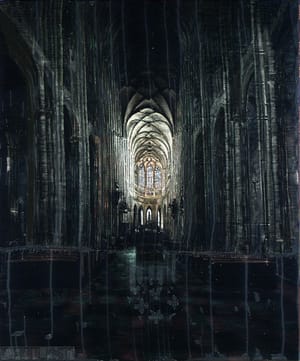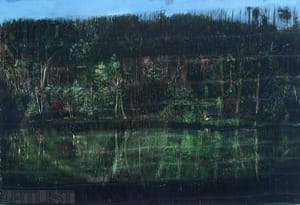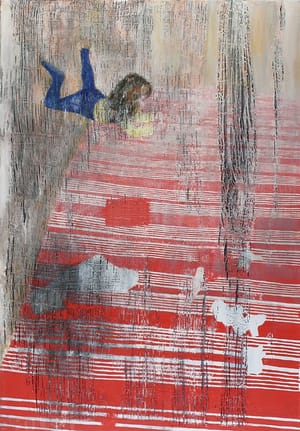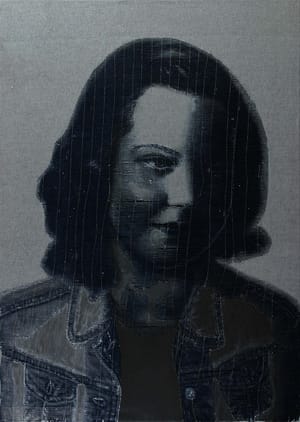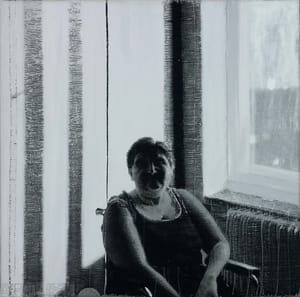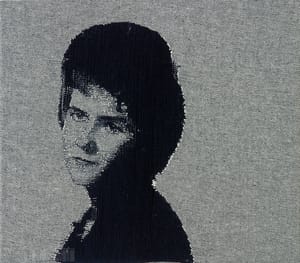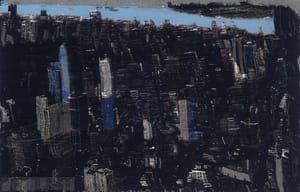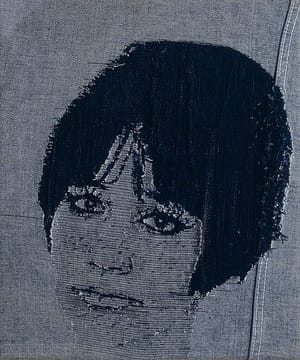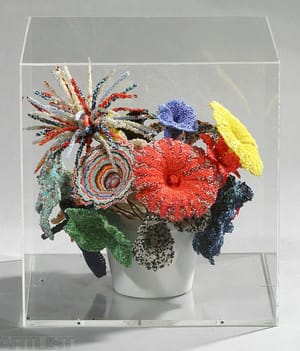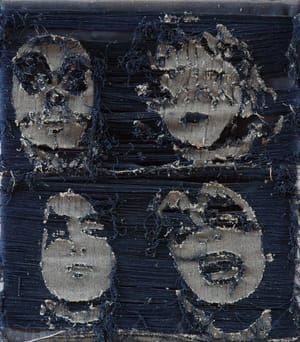- First Name
- František
- Surname
- Matoušek
- Born
- 1967
- Birth place
- Boskovice
- Place of work
- Prague
- Keywords
- CSU Library
- ↳ Find in the catalogue
About artist
The paintings of artist František Matoušek (1967) are characterised by work with a specific material: denim. He is one of few „happy“ artists, who has been able to find his own autonomous expressive element that serves as an irreplaceable mark. His choice of material has had from the start an influence on the shape of his developing works. Most often these are smaller formats, which also suit more modest-type topics. The premise of „denim“ pictures, in which various formal approaches rotate, gave impulse to, in the mid-1990s, a series of effigies of pop singers and actors from the Normalisation era. Here he partially builds upon the tongue-in-cheek strategy of the generational group, LUXSUS (1995-98). It was in this group that, from he beginning, he profiled himself as an artist with an clear-cut internal sensitivity toward the commercial and ideological junk of that period. Even today, with a certain distancing, it is interesting to follow Matoušek as he „bursts bubbles“, with his stealthy, quiet and possibly diverse unmasking of the pompous and medially-celebrated „stars“ of show business, pop culture, fashion, etc. This is from the point of view of someone, who has sort of acknowledged the traces left by these icons and their blinding glare. But he is also someone who mercilessly tosses them about in their seeming „grandeur.“ Meanwhile he chooses the fragile format of ripped fabric: „fossils“ in the memory of a textile medium.
The author’s process for sobering and self-introspection is encrypted in this transient material. His effigies from recent times represent yet another part of Matoušek’s experience. Here the artist depicts family members, friends and acquaintances. He reinterprets a watercolour painting of his mother shown at the age of fifteen. While maintaining the fidelity of the original, he ascribes his model an attribute of a modern-day teenager: a shirt with a hood. A similar effigy of his aunt, based on a photograph, has her clothed in a generationally-defined jean jacket. He leaves his own daughter to watch Večerníček (an evening cartoon show) on a black-and-white TV of Czechoslovak design. Sometimes he only offers the viewer a talisman that brings to mind a deceased relative: a chain with a heart or cross on it. Elsewhere he creates archived effigies from family photo collections (self-portraits). Or he adds different hair, different hairstyles to authentically copied faces. At times he complicates the situation further with his choice of a title that does not correspond at all to the subject of the work. Matoušek plays around with the context of his own memory, to which he has assigned an emotional concept of something higher, more important and integral that extends beyond the individual. He takes a sarcastic turn at casting doubt on visual information as an archival source, even if his immediate personal recollections are tied to them. He finds room therein for manipulation, intentional shifts and the hoodwinking of the human conscience. He takes a sceptical stance on any type of adoration thereof. It is in the landscape that he finds, on the contrary, a reflection of memory that is timeless and time-spatial (spatio-temporal).
Via this technology one can record on the surface large spatial contrasts as well as imperceptible, indeed, almost unrecognisable light movements (crossings).
The topic of landscapes that Matoušek devotes himself to, together with effigies, has held his long-term interest. Overall he creates three types of landscape scenes: horizons on open landscape spaces, those with more intimate nooks and crannies, and then there is the urban landscape which is a separate entity (including select pieces of isolated architecture). It is rare that the chosen technique of torn textile and sense of space illusion would meet up here. The structure of grids (meshes) of textile fibres of varied densities can enable the creation of spatially and light-penetrable surfaces, which stand in contrast with the perfectly covered acrylic ones.
Continuous sketches can also be completely exact. Most important for the artist is the transfer of emotion from the open, discovered space. The subsequent image offers a concentrated view of the „moment in focus.“ Should the landscape, at first glance, appear seemingly banal (the sunset, a snow-covered horizon, the ocean surface), it is after further scrutiny of the image’s surface that the viewer steps into the painting’s own organism: full of activity. This is captured in uncommon nuances, almost beyond the view of the human eye. Although Matoušek uses photographic background material, these are as a rule landscapes already visited and experienced, which does have its importance. The artist travels and gathers emotions from places visited. He creates a sort of hypothetical collection of „images“, from which he later creates his paintings – Norway, Moravia, New York, Berlin, etc. His most recent works draw on inspiration from the natural environment of Ibiza (Eivissa). Today it’s a tourist haven, previously it was a hideaway for the hippy movement. Matoušek travels in the footsteps of local history with an archaeologist’s precision. He travels the island through and through and provides information on all of it: who visited the island, what „important“ people lived there, who lives there now. He takes a personal look at what interests him, uncovering it with his sight. From this aggregate of discovery he creates an impression of the place that he only afterwards connects with the visual experience of the area. He submerses himself in its essence. He maps out new-age „pilgrimage sites“ for tourists and in doing this creates a sort of more general recollection. By connecting with the image logic of time-absorbed and time-lost portraits and effigies, the viewer is overwhelmed by references to something both transient and still continuously repetitive. [There is a connection to] a special tradition of collective memory, whose exact form is otherwise blurred and undisclosed but which in places clearly has a hard time coming into being. Perhaps this is the foggy feeling of the continuity of one’s own existence that an individual experiences when „travelling“: i.e. movement in both space and time, horizontally and vertically. Or perhaps this is a different, more significant experience: one that need not be described, but which can be shared.
- Author of the annotation
- Petr Vaňous
- Published
- 2008
CV
Studies:
1993-1999 Academy of Fine Arts, Prague
- Member of art groups included in ARTLIST.
Exhibitions
- Solo exhibitions
-
2013
František Matoušek: Chtěl bych být krajinářem, Galerie 1. patro, Praha
2012
František Matoušek: Podle skutečnosti, Galerie Petr Novotný, Praha
2011
Kindertherapie, Gallery 5. patro, Prague
2010
de Nimes, Dox – the Centre for Contemporary Art, Prague
2009
Co na světě mám rád, Gallery 5. patro, Prague
New Yorky, Gallery ad astra, Kuřim
2008
Gallery Caesar, Olomouc
2007
Kdo mě dneska hlídá ,Gallery České pojišťovny, Prague
2006
GalleryA.M. 180, Prague
Gallery ad astra, Kuřim
2005
Gallery Ars, Brno
2003
Gallery Sokolská 26, Ostrava
2002
Gallery Václava Špály, Prague
2001
Gallery MXM, Prague
2000
Gallery Černý pavouk, Ostrava
Gallery Tvrdohlaví, Prague
1999
Gallery MXM, Prague
1998
Gallery Na bidýlku, Brno
Gallery Malá Špálovka, Prague
- Group exhibitions not included in ARTLIST.
-
2011
Duše krajiny, duch místa, Galerie U Betlémské kaple, Praha
Česká malba generace 90. let, Dům umění města Brna, Brno
2010
Sex extrémně líbezný, Galerie XXL, Louny
2009-2010
Oko a srdce. Sbírka Jiří Štarha, Galerie Šternberk, Šternberk
2008
Moderní a poválečné umění, současné umění, fotografie, Galerie 5. patro, Praha
Zátiší: David Adamec, Dalibor David, František Matoušek, Petr Pastrňák, Palác Adria, Praha
Na bidýlku: Umělci z okruhu Galerie Na bidýlku v Brně, Galerie Jelení, Praha
Světla měst a noční chodci, Galerie moderního umění v Hradci Králové, Hradec Králové
2007
Hrubý domácí produkt, GHMP, Městská knihovna, Prague
Resetting, GHMP, Městská knihovna, Prague
2006
Akné, Gallery Rudolfinum, Prague
2004
Malíři 03, Painters 03, Gallery U bílého jednorožce, Klatovy; VČG, Pardubice
2003
Retroperspektiva, Dům pánů z Kunštátu, Brno
Artnow.cz, Výstavní síň Mánes, Prague
2000
Příběhy ze Středozemí, Stories from the Midland, USF Gallery, Bergen, Norway
Konfrontace, Confrontation, the Czech Centre, London, the Great Britain
1999
Per Plex, Gallery V. Špály, Prague
1998
Snížený rozpočet, Low Budget,Mánes, Prague
Harmonie, Gallery Václava Špály, Prague
1997
Luxsus, Gallery MXM, Prague
Mrtvé duše, Nová síň, Prague
Mělník 07, Castle Mělník, Mělník
1995
Zkušební provoz, Test Run, Mánes, Prague
Monography
- Monography
ARTNOW.CZ (katalog, text: P. Vaňous), Praha 2003
P. Vaňous, Resetting/ Jiné cesty k věcnosti/ Alternative Ways To Objektivity (katalog výstavy), GHMP - Městská knihovna, 21. 12. 2007 - 23. 3. 2008, nestr., Praha 2008
- Articles
1999
L. Lindaurová, Zpráva o stavu českého umění podle Matouška, Umělec 3/1999
M. Pesh, František Matoušek, Ateliér 13/1999
2003
M. Weber, Krásné obrazy, Ateliér 16-17/2003
2007
J. H. Vitvar, Nedostatkovější než riflovina, Respekt 39/ 2007
